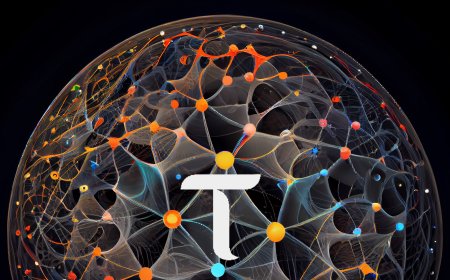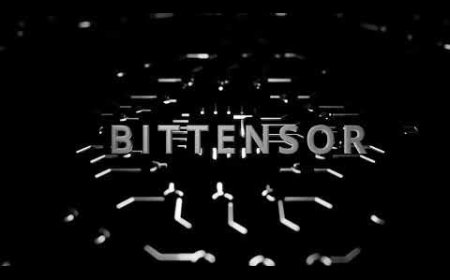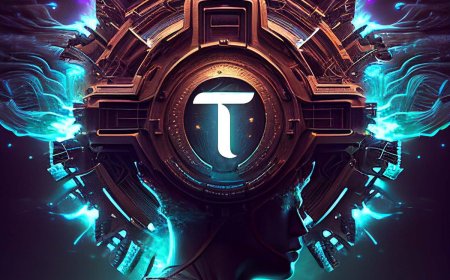Bittensor Network Update: Child Keys, EVM Pallet, and Dynamic TAO Revolutionize Decentralized AI
Bittensor, the pioneering decentralized AI network, has experienced a whirlwind of activity and innovation in recent weeks. This comprehensive update delves into the latest developments, including the groundbreaking launch of child keys, the imminent integration of the EVM pallet, and the ambitious plans for dynamic TAO.

We'll also explore exciting new subnets and the ongoing evolution of the Bittensor ecosystem, showcasing how these advancements are reshaping the landscape of decentralized artificial intelligence.
Child Keys: A Quantum Leap in Network Decentralization
The most significant update in the Bittensor network this week was the introduction of child keys. This innovative feature represents a major step forward in promoting decentralization and flexibility within the network.
How child keys work:
- Validators can designate a key on the network as a child key, assigning a proportion of their stake ranging from 0% to 100%.
- The specified proportion of the validator's stake weight is transferred to the child key on that particular subnet.
- For instance, if a major validator like OTF has 1.2 million TAO and assigns 10% to a child key, that equates to 120,000 TAO of stake weight for the child key on the subnet.
The implementation of child keys introduces a novel concept of stake per subnet, subtly altering the network's metagraph. In this new paradigm, it's the stake weight - the sum of a key's own stake plus all delegated stake - that determines consensus, rather than raw stake alone.
Child keys are already demonstrating their potential to reshape the network. OTF, a prominent validator, has leveraged this feature to allocate some of its stake to the Miner's Union. This move not only provides the Miner's Union with increased bandwidth but also empowers them to develop new tools and capabilities. Such actions stimulate further decentralization within the network and significantly lower the barriers to entry for subnet owners and developers.
The child key feature also addresses a crucial challenge in subnet development - the difficulty of building and operating subnets without sufficient stake. By allowing established validators to distribute stake to promising projects and subnet owners, child keys create a more dynamic and accessible ecosystem for innovation.
EVM Pallet: Bridging Bittensor with the Ethereum Ecosystem
Another exciting development on Bittensor's horizon is the integration of the EVM (Ethereum Virtual Machine) pallet. This addition promises to dramatically expand Bittensor's capabilities and interoperability with the vast Ethereum ecosystem.
Key features and implications of the EVM pallet:
- Currently in the Proof of Concept (POC) stage, with internal review underway.
- Will enable seamless transfer of balances between Subtensor and EVM environments.
- Introduces the ability to interact with the staking pallet directly from smart contracts.
- Opens up the possibility of issuing ERC20 tokens for every Alpha token, making them truly transferable and claimable across ecosystems.
- Compatibility with most Ethereum development tools, providing a familiar environment for Solidity developers.
The integration of the EVM pallet represents more than just technical interoperability - it's a strategic move that positions Bittensor at the intersection of decentralized AI and the broader blockchain ecosystem. This bridge to the Ethereum world could catalyze a new wave of innovation, allowing developers to create more sophisticated incentive mechanisms and complex, interconnected systems within the Bittensor network.
Moreover, the EVM pallet could facilitate the creation of trustless cross-chain bridges and enable more hierarchical designs on top of existing subnets. This added layer of functionality has the potential to attract a wider range of developers and projects to the Bittensor ecosystem, further enriching its capabilities and use cases.
Dynamic TAO: Reimagining Subnet Tokenomics
The Bittensor team is making significant strides in the development of dynamic TAO, a revolutionary system designed to manage subnet tokenomics more effectively. While still in the development phase, dynamic TAO aims to create a more balanced, market-driven approach to subnet emissions and valuation.
Key aspects and goals of dynamic TAO:
- Replacement of the current static emission system with a more flexible and responsive model.
- Implementation of a consistent 18% allocation for subnet owners, providing greater certainty for long-term planning and development.
- Creation of a mechanism to prevent the formation of "cancerous" subnets by closely tying ownership distribution to stake distribution.
- Introduction of a risk-based decision-making process for manipulating emission flow, requiring participants to consider the long-term value and ownership in the ecosystem.
The team is taking a measured approach to implementing dynamic TAO, with plans for another incentivized testnet in the coming weeks. This cautious strategy ensures a fair transition for all participants and minimizes disruption to existing subnet ecosystems.
One of the key challenges in implementing dynamic TAO is striking the right balance between dynamism and stability. The team recognizes the need for consistency, particularly for subnet owners who require a degree of certainty to build their teams and develop their projects. At the same time, the system must be flexible enough to adapt to changing market conditions and prevent exploitation.
The potential impact of dynamic TAO extends beyond just tokenomics. By creating a more nuanced and responsive system for resource allocation, it could drive more efficient development of AI models and incentivize long-term value creation within the network.

Miner's Union: Democratizing Network Participation
The recent launch of the Miner's Union validator represents an innovative approach to stake delegation and subnet weight assignment. This novel system empowers users to have a more direct say in network governance and resource allocation.
How the Miner's Union works:
- Users can delegate their stake to the Miner's Union validator.
- Through an intuitive web application, delegators can vote for their preferred subnets.
- The validator automatically assigns weights according to the proportion of stakes and votes received.
- Rewards are distributed back to delegators, with a small additional boost for active voters to encourage participation.
This system not only allows for more democratic participation in the network but also helps distribute resources more efficiently across subnets. By giving stake holders a voice in subnet prioritization, the Miner's Union creates a more engaged and responsive network ecosystem.
The Miner's Union also serves as a testing ground for new governance models within the Bittensor network. Its success could pave the way for more decentralized decision-making mechanisms and potentially influence the development of dynamic TAO and other future network upgrades.
Subnet 38: Pushing the Boundaries of Decentralized AI Training
One of the most exciting additions to the Bittensor network is Subnet 38, which aims to tackle the complex challenge of distributed, decentralized training for large language models. This ambitious project showcases the potential of Bittensor to revolutionize AI development.
Key features and goals of Subnet 38:
- Incentivizes miners to provide both compute power and bandwidth for training a single, massive language model.
- Currently working with a 250 million parameter model, with plans to scale up to even larger architectures.
- Implements a sophisticated validation system where miners send data points and gradients to validators for verification.
- Utilizes the LAMB optimizer for efficient training on extremely large batches (up to 32,000 samples).
The subnet is already showing promising results, with loss curves demonstrating consistent convergence, albeit at a slower rate than centralized training. This slower convergence is a trade-off for the increased decentralization and resilience offered by the Bittensor network.
The team behind Subnet 38 is continuously working on optimizations, including exploring gradient compression techniques and more efficient all-reduce mechanisms. They're also investigating ways to incentivize miners to produce better quality gradients, which could lead to faster and more effective training.
The success of Subnet 38 could have far-reaching implications for the AI industry. By demonstrating the feasibility of training large models in a decentralized manner, it challenges the current paradigm of AI development dominated by a few large tech companies with massive computational resources.
The Road Ahead: Challenges and Opportunities
As Bittensor continues to evolve, it faces both exciting opportunities and significant challenges. The integration of child keys, EVM pallet, and dynamic TAO represents a major leap forward in functionality and flexibility. However, these new features also introduce additional complexity that the network must manage.
One key challenge is ensuring that the network remains accessible to a wide range of participants, from individual enthusiasts to large-scale AI researchers. The team is actively working on creating user-friendly interfaces and tools to lower the barrier to entry and encourage broader participation.
Another area of focus is improving the efficiency and speed of decentralized AI training. While subnets like Subnet 38 are making impressive progress, there's still work to be done to match the performance of centralized training systems. Innovations in areas like gradient compression, efficient validation mechanisms, and optimized consensus algorithms will be crucial in this regard.
The team is also keenly aware of the need to balance innovation with stability. As new features are introduced, careful consideration must be given to their impact on existing subnet owners and network participants. The phased approach to implementing dynamic TAO is a good example of this cautious yet progressive strategy.
Conclusion: A New Frontier in Decentralized AI
The recent developments in the Bittensor network - from child keys and the EVM pallet to dynamic TAO and innovative subnets - underscore its position at the forefront of decentralized AI. These advancements are not just technical improvements; they represent a fundamental shift in how AI can be developed, trained, and deployed.
By creating a more decentralized, flexible, and incentive-aligned network, Bittensor is laying the groundwork for a new era of AI development. One where the benefits of artificial intelligence are not concentrated in the hands of a few large corporations, but distributed across a global network of contributors and stakeholders.
For developers, miners, and AI enthusiasts, the evolving Bittensor ecosystem offers unprecedented opportunities to participate in shaping the future of AI. Whether it's running a validator, contributing to subnet development, or exploring new applications of decentralized AI, the possibilities are vast and growing.
As we look to the future, it's clear that Bittensor is not just building a network - it's nurturing an entire ecosystem of innovation in decentralized AI. With each new feature and subnet, it moves closer to its vision of a truly decentralized, globally accessible AI infrastructure. The journey ahead is sure to be filled with challenges, but also with the potential for groundbreaking discoveries and applications that could reshape our relationship with artificial intelligence.
Source : @Opentensor Foundation
















